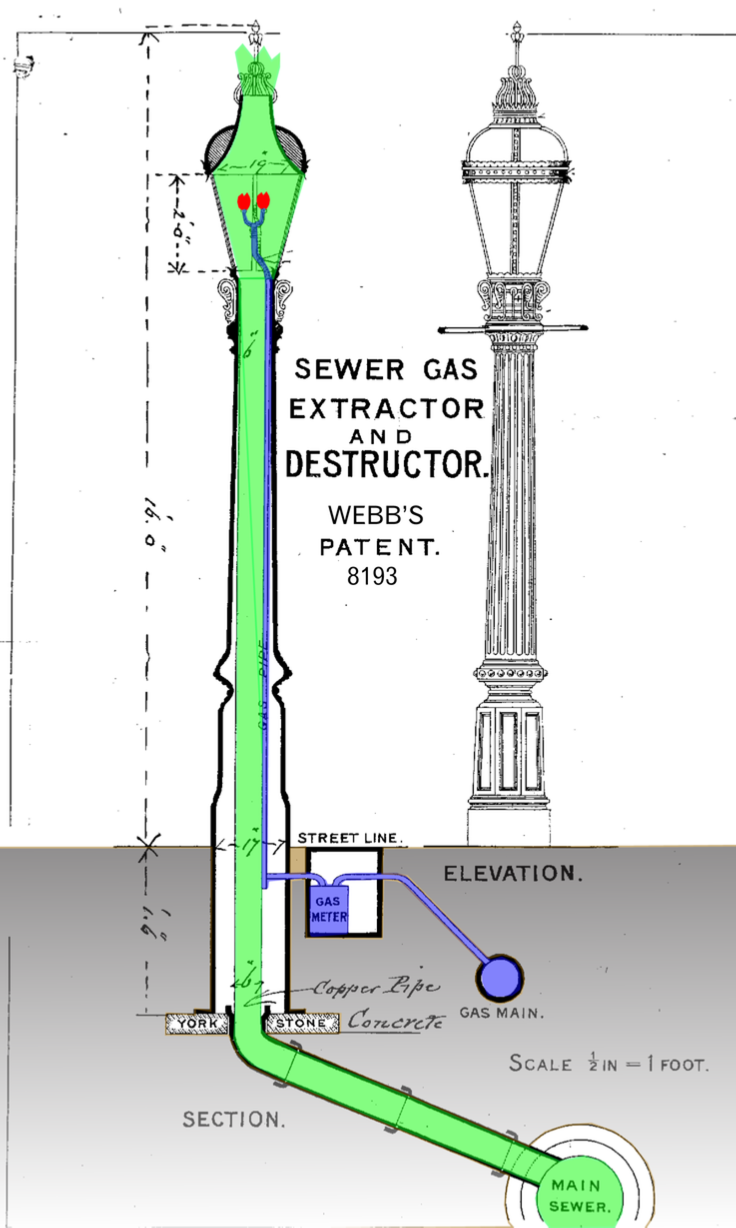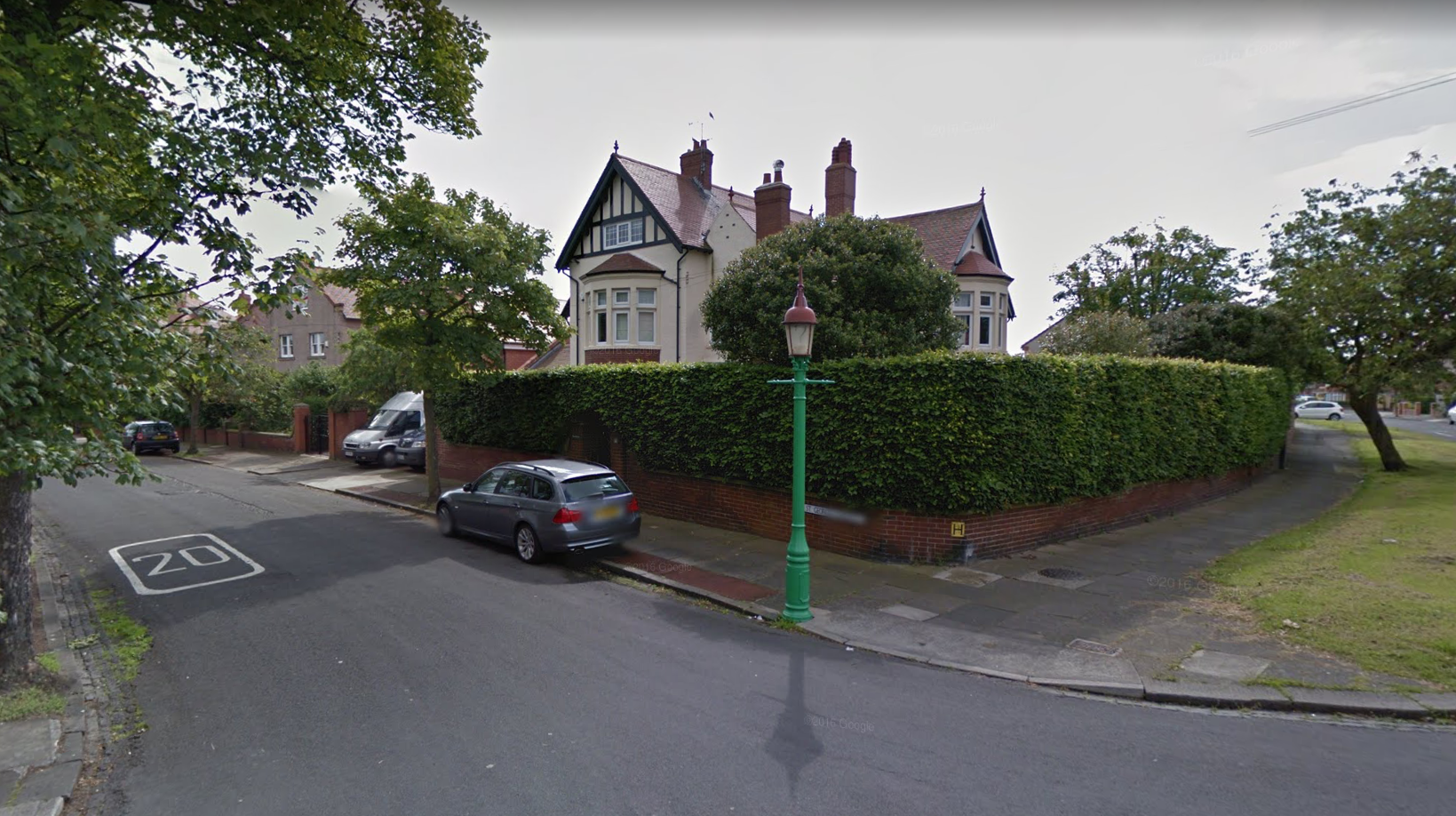Last week I wrote on The Great Stink of 1868. By chance todays post is on a related subject. Many people will be aware that in the Victorian age, much of London was lit with gas lamps and in deed several places still are. Less well known is that some of these lamps were powered by the gas from human sewage.
The Webb Patent Sewer Gas Lamp was invented in the late 19th century by the Birmingham inventor Joseph Webb. In London the lamps were used for two main reasons; firstly to burn off the smells and germs from London’s sewer system, and secondly as a low cost, low maintenance way to keep London lit up at night.

Methane was collected by a small dome in the roof of the sewer, with the gas then being diverted into the lamp on the street above. The lamp remained lit 24/7, powered at least partly by an almost unlimited amount of waste.
Intriguingly, the effluence from the sewers was not actually concentrated enough to fully power the lamps. Instead, the lamps were “dual powered” by ordinary town gas supplies which heated the filament up to around 700 degrees F. This heat then drew the methane and other gases from the sewer system, in turn ventilating up to three quarters of a mile of pipe!
There is just one of these lamps still fully functioning in London and it is in a very swanky park of London, next to one of the finest hotels in London, The Savoy. The map below is at least partly powered by the waste that their guests produce.

There aren’t any accurate details of how many of these lamps were produced as a fire in 1925 at the Webb Lamp Company some time ago destroyed all records but hundreds and likely thousands were installed.
Just off The Strand is a relatively unvisited street called Carting Lane. We are very lucky to still have this lamp as just a few years ago, a reversing lorry accidentally knocked over the lamp. Thankfully it was subsequently restored by engineers from Thames Gas and is now protected by Westminster Council.
The lamps were invented in the 1890s by a Birmingham man Joseph Webb. Within ten years of their arrival in the lamps became spread across the London to London and then the world. Old sewers were often wonky and pockets of gas could collect that would lead to deadly explosions and these lamps were a clever way to eliminate that problem and provide almost free lighting to the murky streets above.
Rather morbidly, a number of these lamps were used to ventilate the septic tanks and also the Post Mortem Rooms in various large hospitals in provincial towns such as Southend and also on the large city hospitals such as the six such lamps installed on the apex of the glass roof of the Pathological Block of Whitechapel’s London Hospital in 1900.

As technologies and operating procedures changed and electricity came to dominate things, naturally the use of the lamps began to fall by the wayside with the damage of WW2 not helping matters. Though as a boy in my local seaside town of Whitley Bay there were still many of these lamps around in the 1970’s and 80’s, brightly painted in that the seaside mood would not be spoilt by the concept of burning gas from human waste. In Sheffield some lamps remain and they continue to serve the original purpose of ventilating the sewers.

The lamps went to some British Commonwealth countries though in Canada, a separate flame burner had to be installed just under the surface of the lamp to ensure the freezing winters didn’t block the ventilation pipe.
Oh, I say!
>:8o
LikeLiked by 1 person
Lol
LikeLike
Reblogged this on sed30.com and commented:
Fascinating- did not know this. Assumed they were town gas supplied.
LikeLiked by 1 person
Apparently they number in the thousands 100 years ago. What a clever way to kill 2 birds with 1 stone, sewage and lighting!
LikeLiked by 1 person
Yep shame cannot use it today
LikeLike
A fascinating post … just wondering is an initial “s” missing on your adjective to describe the park by the Savoy….
LikeLike
Reblogged this on Pete's Favourite Things and commented:
Following on from my post about Frederick Winsor and the production of Gas in London, I was interested to read this post from Stephen Lidell which presents a whole different method of producing gas to light our streets.
LikeLike
My first thought was, “What? A lamp can fart?” Good job picking a very interesting heading and topic for your blog. I had no idea that some lamps were powered by sewage, or that it was even possible. It is incredible that this level of innovation already existed in the 19th century. Thanks for giving me a very interesting topic to discuss at the pub later!
LikeLiked by 1 person
Thanks Osman. I’m really glad that you enjoyed it. They were such clever people. Incidentally on Monday I will be posting a related post and it mentions how if not treated, this gas could cause underground explosions and fires that lasted for days!
LikeLike
Very beautifully written! and stunning pics
Happy Holidays 🙂
LikeLiked by 1 person
Thank-you. You too!
LikeLiked by 1 person
Pleasure is mine.. Do check my bogs and share your feedback. https://mesmotsbysazz.com/
LikeLiked by 1 person